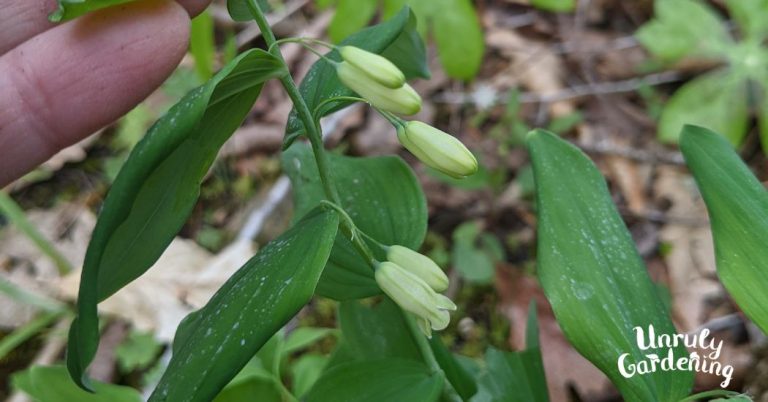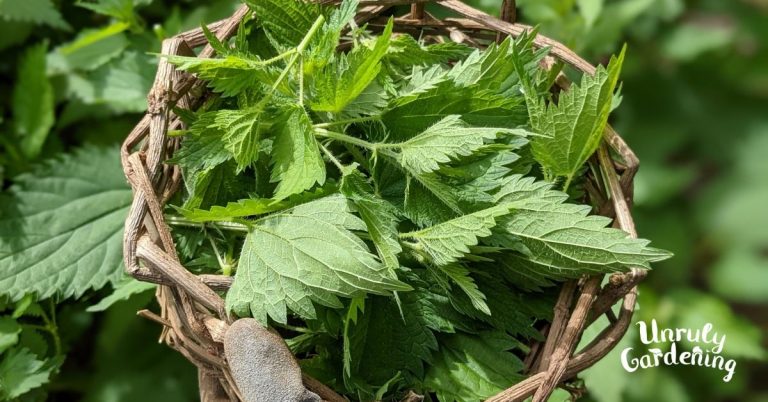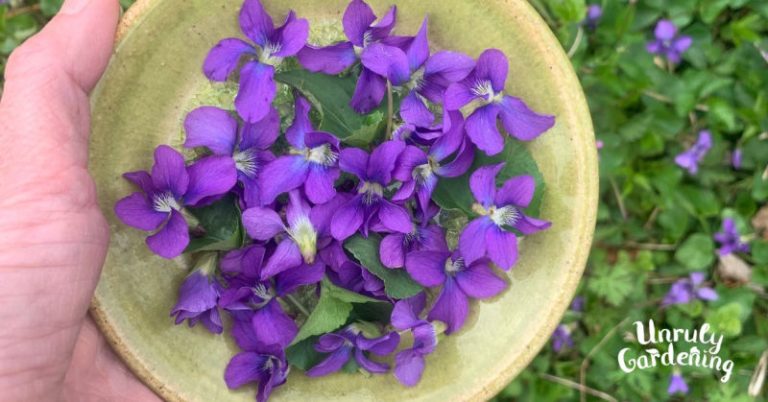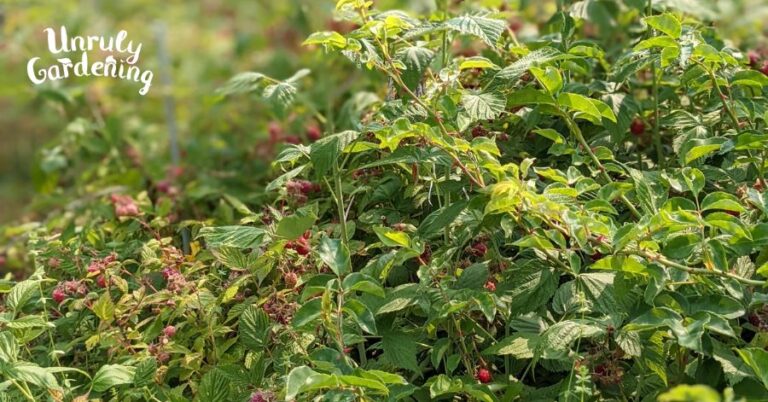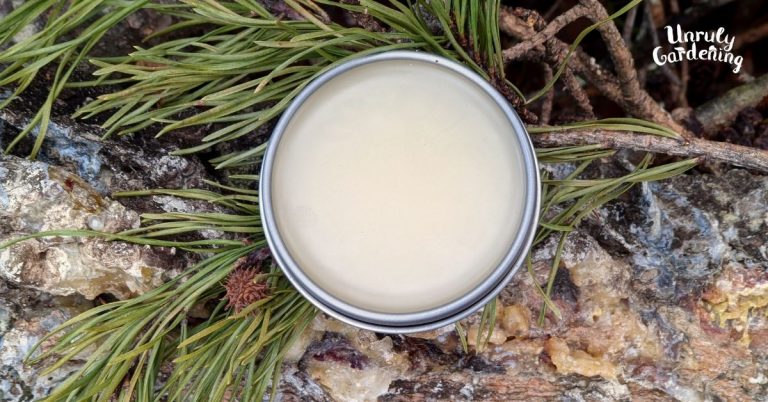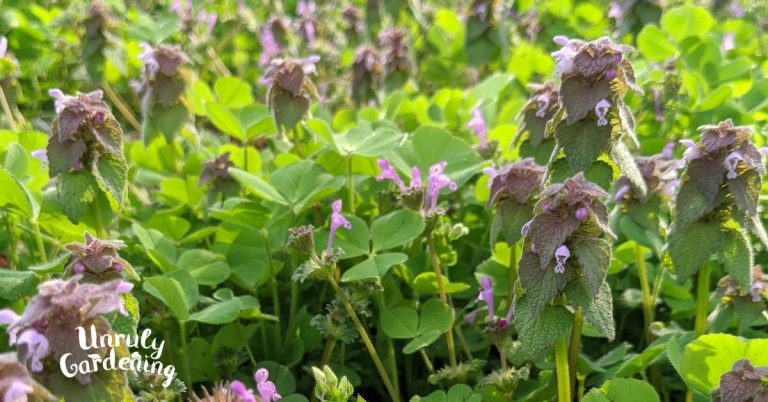Foraging Goldenrod (Photos, Tips & Lookalikes!)
Learn how to forage goldenrod – a native pollinator plant with herbal uses! You’ll also learn how to tell it apart from ragweed and other plants that bloom at the same time, plus tips on how to use it.
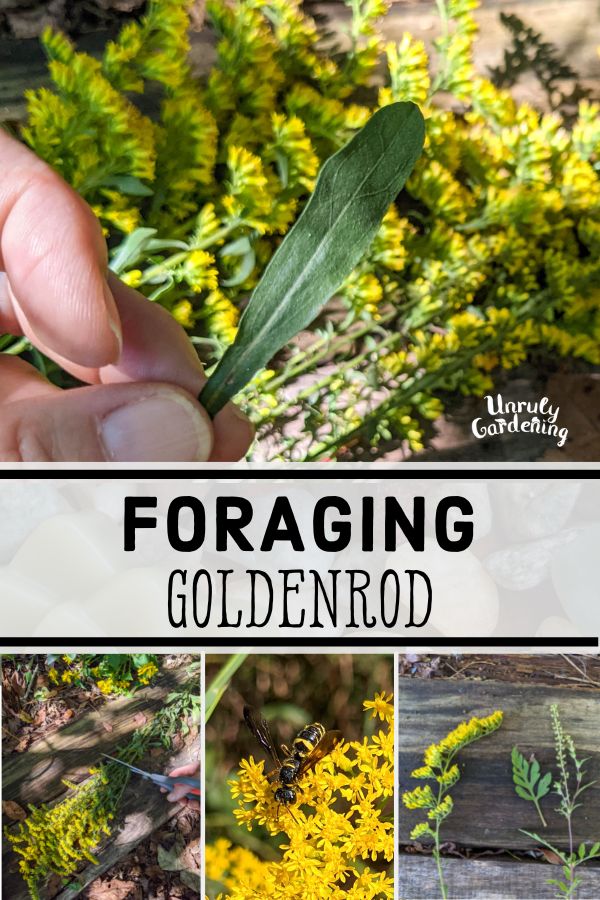
Goldenrod (Solidago spp) is a bright yellow flowering plant that blooms in late summer and early fall. There are lots of different species of goldenrod in the United States (over 75!), plus more found in other parts of the world.
Solidago canadensis (Canada goldenrod), S. gigantea (giant goldenrod), S. odora (sweet goldenrod), and S. virgaurea (European goldenrod) are most often used for medicinal purposes, but most herbalists feel that goldenrod species in general share similar properties and can be interchanged.
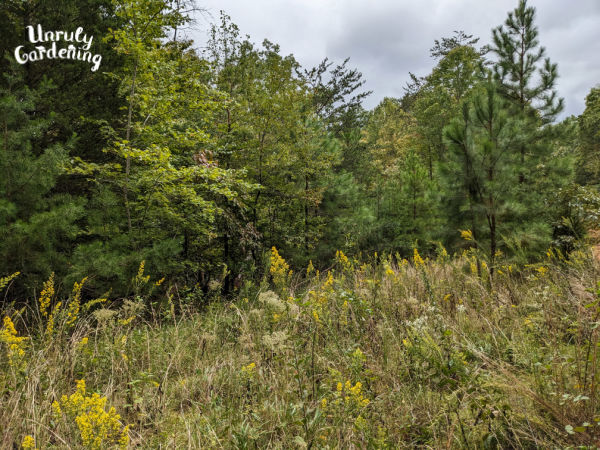
Not only are goldenrod blooms an excellent late season food source for honey bees and other pollinators, it also provides herbal benefits for humans and their pets. Solidago species are used to treat seasonal allergies, colds, flu, high cholesterol, and kidney stones.
Our favorite use for goldenrod though is including it in salves and other products to help aches and pains.
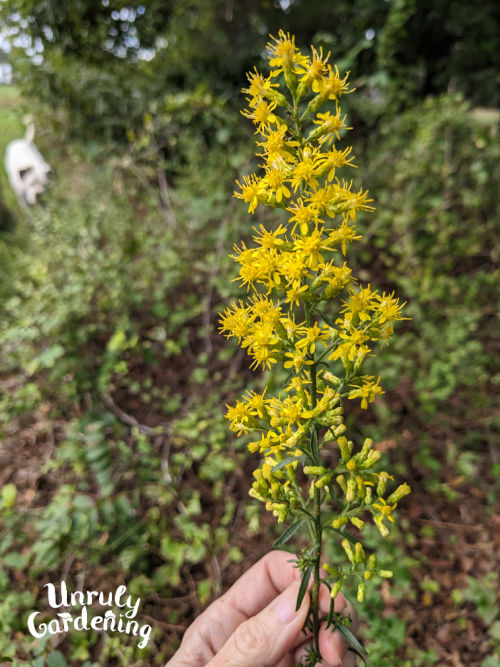
Related: Be sure to check out our article 6 Things to Make with Goldenrod – found over at our sister site, The Nerdy Farm Wife, for recipes for tincture, tea, salve, and more!
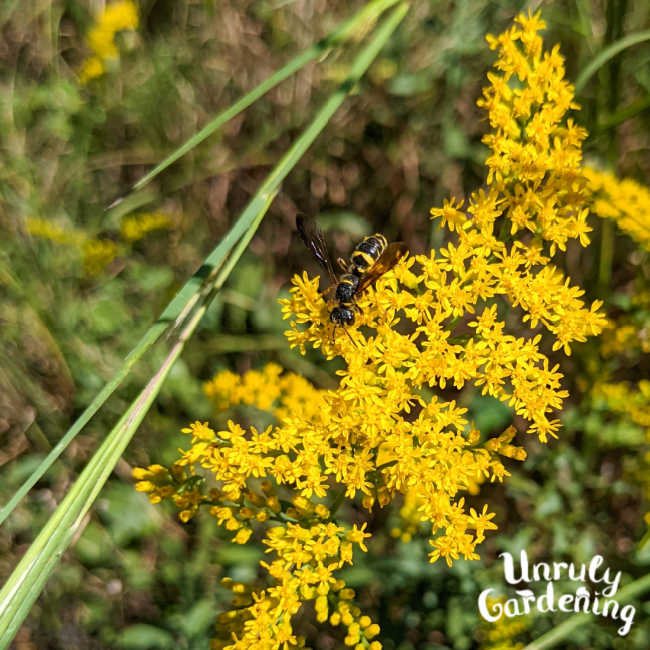
Identifying Features of Goldenrod
Since it’s a widespread and common plant in North America and other parts of the world, you likely have goldenrod growing near you! Look for it growing along field edges, in meadows, or where the ground has been disturbed. It likes dry, sunny, and open areas.
It’s a rather tall perennial – with stems ranging about 2 to 5 feet tall, and covered with plumes of bright yellow flower clusters.
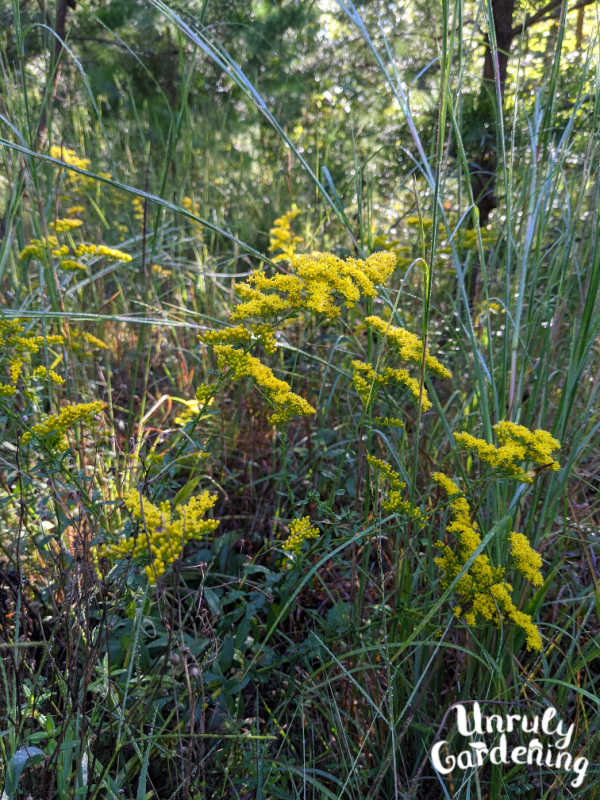
Flowers
The individual flowers are very small and ragged looking, growing together in a plume shape, which is sometimes described as pyramid-shaped cascading clusters of flowers.
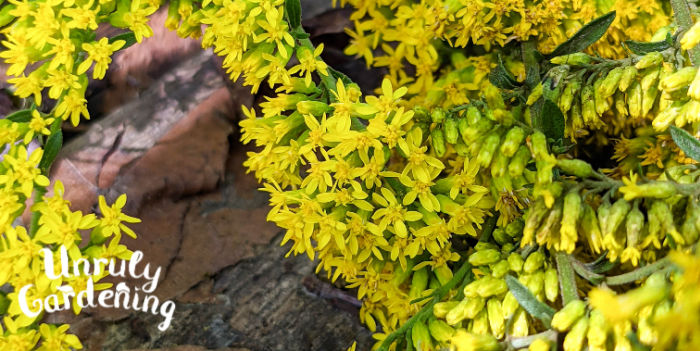
Leaves
Goldenrod leaves are lance shaped (long and narrow), and alternate (the leaves don’t grow opposite from each other on the stem).
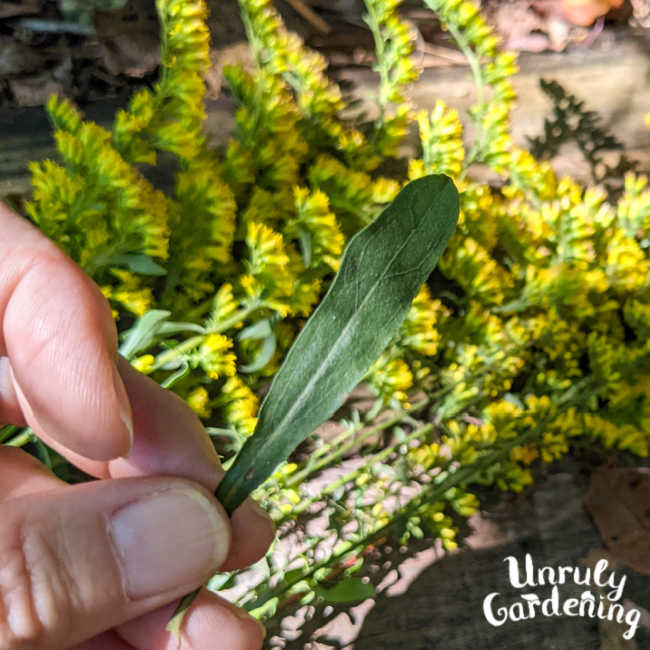
Depending on the species, they may have smooth or toothed edges.
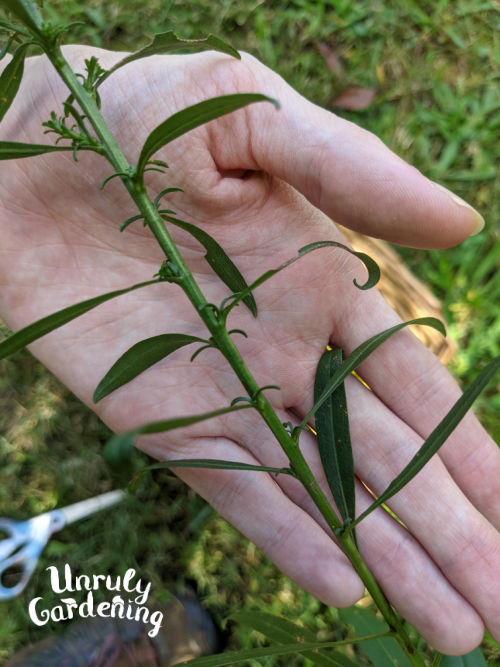
Lookalikes
Here are a few plants that may be confused with goldenrod. If you come across a plant that you think is goldenrod and don’t know a local foraging friend or plant expert to help confirm your guess, first check it with a plant app on your phone – we like the Picture This Plant Identification app.
Use the information that the plant app gives you as a starting point. (Never rely 100% on the app, because sometimes it’s very wrong!) Check foraging books for your area, or online resources to find more photos of the plant. We recommend state extension agency or .edu sites for the most reliable information.
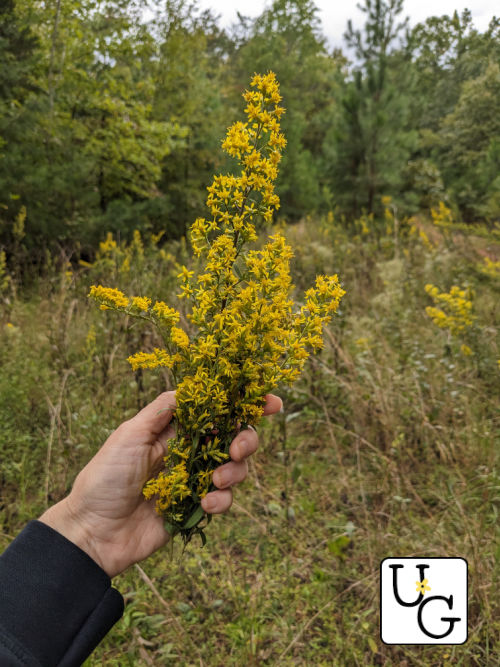
There are also many helpful Facebook groups that will help you ID a plant. For our area, we find the Virginia Native Plant Society Facebook group is an accurate source for help with identifying native plants, such as goldenrod.
Never rely on just one source though (including us) – double and then triple check with other sources to confirm!
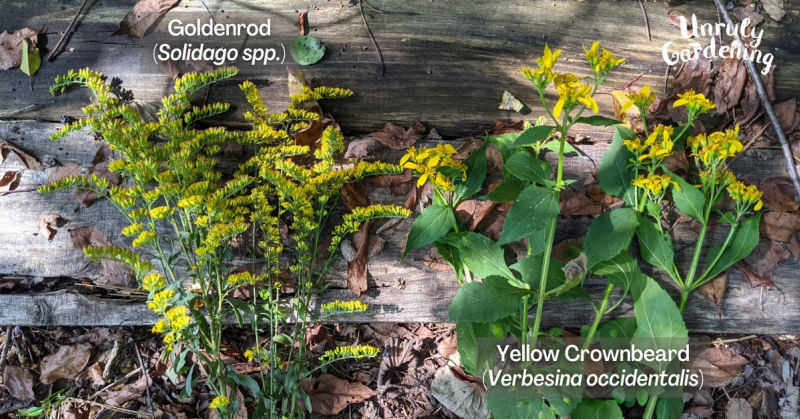
Yellow Crownbeard or Stickweed (Verbesina occidentalis)
Crownbeard (Stickweed) is quite a tall plant. Here in zone 7a, we find yellow crownbeard starts blooming earlier in the year, in August, while goldenrod doesn’t really start popping until September.
Yellow crownbeard is also more aggressive growing than goldenrod, and we tend to find wide swaths of it growing in places. (It somehow manages to survive in our acres of kudzu!)
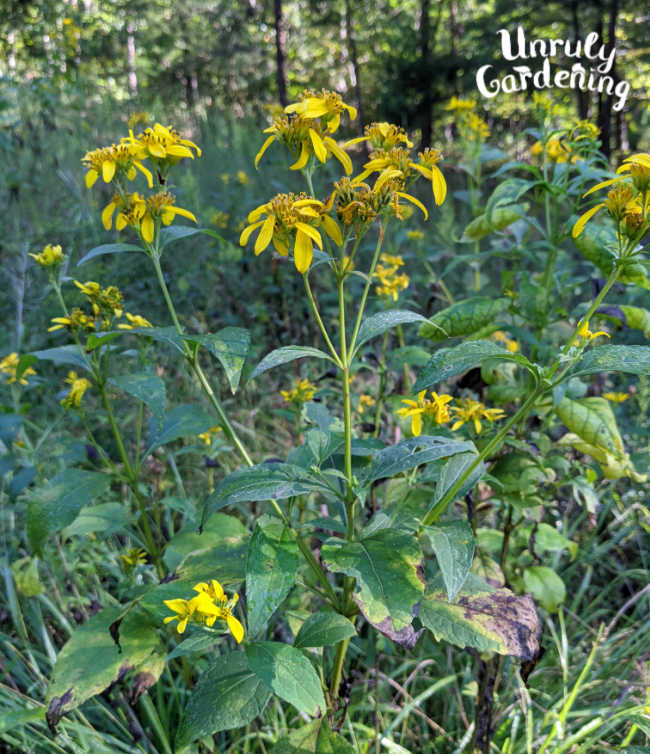
While stickweed has a bunch of yellow flowers on top of the plant, they’re larger and don’t grow in a plume or drooping cluster shape. The leaves are also much different sizes! Goldenrod has narrow little leaves that grow alternately from each other, while crownbeard has large rounded leaves that grow opposite from each other.
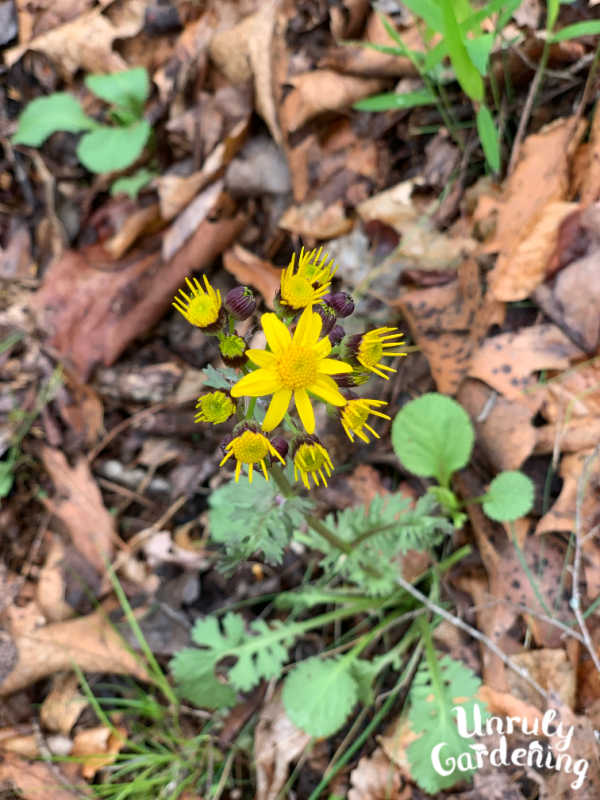
Ragwort (Packera obovata, syn. Senecio obovatus)
Though it has yellow flowers, they’re large and daisy like, plus it usually blooms at a different time in the year, so we don’t think ragwort looks a lot like goldenrod. However, it’s often found on the look alike list, and is a toxic plant you should know, so we’re including a photo of round leafed ragwort here. Also be sure to check out these photos of tansy, ragwort, and goldenrod for comparisons.
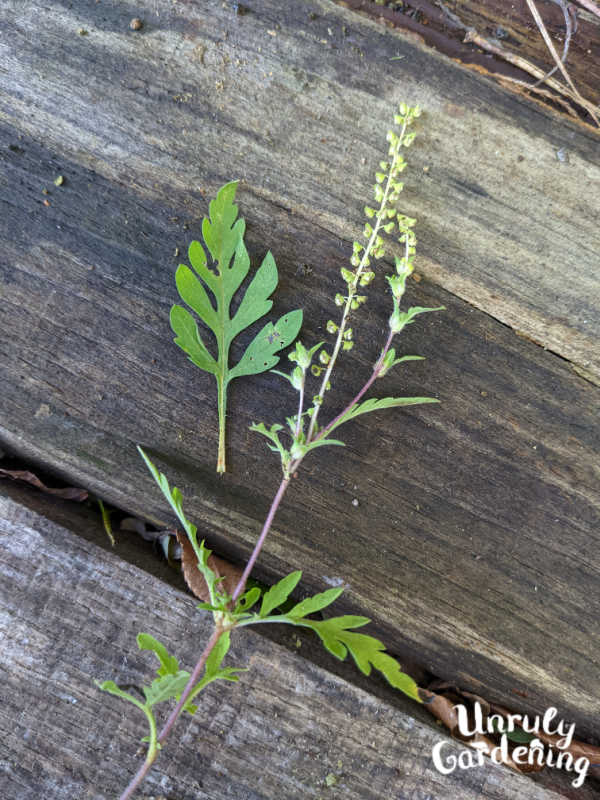
Ragweed (Ambrosia spp.)
Many people confuse goldenrod for ragweed, blaming goldenrod for their seasonal allergies. Almost always, the culprit is ragweed, with its tiny little pollen grains that blow in the wind. In contrast, goldenrod pollen is heavy and very unlikely to blow where you would breathe it in.
Ragweed often grows right beside goldenrod and blooms at the same time. However, ragweed flowers are very small and non-descript. They’re green or white-green and hard to spot unless you know what you’re looking for.
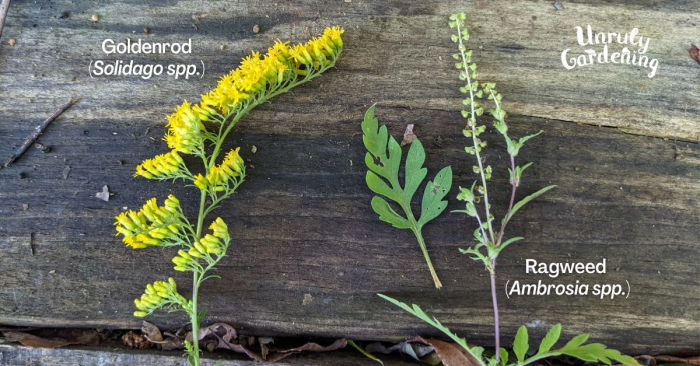
Above is a photo of ragweed beside some goldenrod. You can see they look very different! So the next time you feel sneezy, don’t blame the pretty yellow flowers that stand out, instead blame their sneaky little meadow mate – ragweed!
Uses for Goldenrod
As an edible and medicinal herb, all parts of goldenrod can be used – leaves, flowers, and even the roots, though the flowering tops are most often used.
Goldenrod is used for:
- high cholesterol
- kidney stones
- seasonal allergies and hay fever
- colds & flu
- and more
Please visit the article at our sister site, The Nerdy Farm Wife, for 6+ Things to Make with Goldenrod and to learn how to make remedies and recipes such as goldenrod tea (or infusion), tincture, salve, and more!
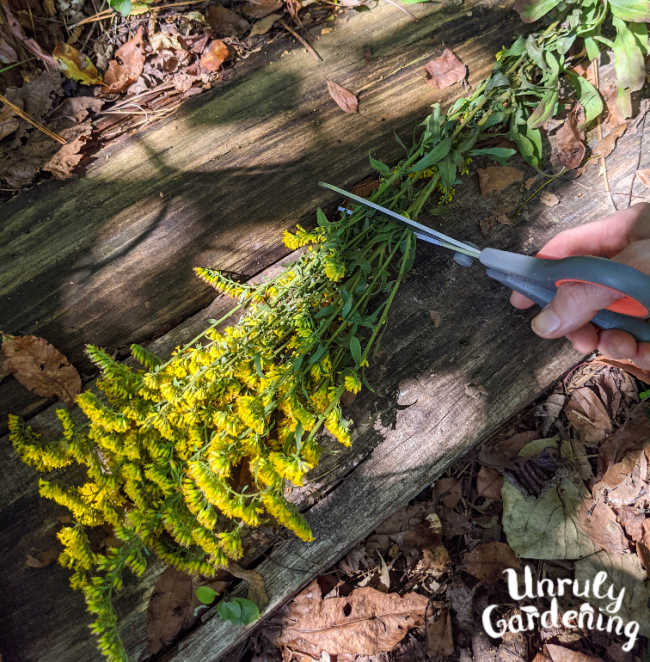
How to harvest, dry & store goldenrod:
Harvest goldenrod flowers on a dry day or when rain and dew aren’t on the plant. A dry sunny mid-morning is a perfect time, but work with the weather you have. Bring a pair of scissors or plant snips with you – goldenrod stems are tough to break with just your hands.
The flowering tops are the part you want to cut off – this is about the top 1/3 to 1/2 of the plant. Don’t pull up the entire plant by its roots – it’s a perennial and you’ll want the roots in place to come back next year!
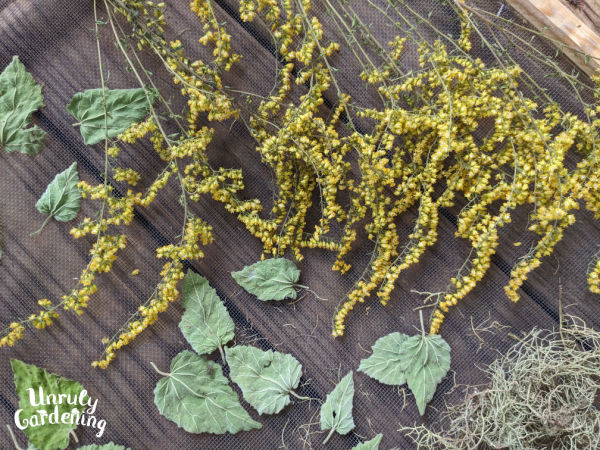
To dry goldenrod, cut off the flowering tops, pull apart individual stems, and then spread them out in a single layer on a drying screen or paper towels, and allow to air dry for several days. You could also use a dehydrator, set to the herb setting (around 90 degrees F) checking hourly after the first few hours of drying time.
Store the completely dried goldenrod in brown paper lunch bags or a glass mason jar out of direct sunlight and heat. Shelf life of dried herbs is usually around 9 months to 1 year. If the color starts noticeably fading, then it’s time to compost, since faded color usually indicates faded potency.
References & Further Reading
Cech, Richo. Making Plant Medicine. Williams, OR: Horizon Herbs, 2000. Print.
European Medicines Agency. Assessment report on Solidago Virgaurea L. London. Sept 4, 2008. Accessed online September, 2022.
Howell, Patricia Kyritsi. Medicinal Plants of the Southern Appalachians. Mountain City, GA: BotanoLogos Books, 2006. Print.
Native American Ethnobotany Database. Goldenrod. Accessed online September, 2022.
Tilford, Gregory L. and Mary L. Wulff. Herbs for Pets. Mount Joy, PA: Fox Chapel Publishing, 2009. Print.
Wood, Matthew. The Earthwise Herbal, Volume I. Berkeley, CA: North Atlantic Books, 2008. Print.
Our articles are for information and idea-sharing only. While we aim for 100% accuracy, it is solely up to the reader to provide proper identification. Be sure to seek out local foraging classes and plant walks, and invest in mushroom and foraging guides suitable for the area you live in, since some wild foods are poisonous, or may have adverse effect.

